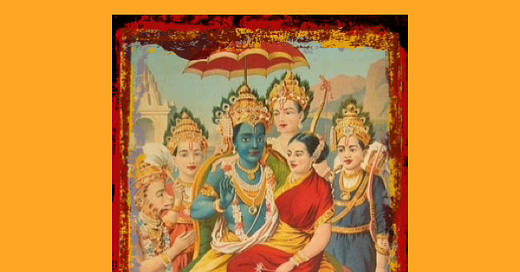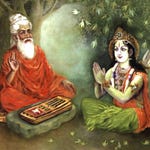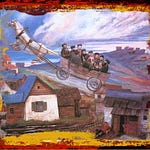CLICK HERE to Read about, Purchase, and Download the full, 400 page- ePUB
Several years ago, I met Ram Dass at a small gathering in the San Francisco area and told him a story about Hanuman. The story was taken from the oral tradition of India and had never been written down. Even though Ram Dass had lived in India and his Guru, Neem Karoli Baba, was said by many to be an incarnation of Hanuman, Ram Dass had never heard the story before and asked me to send it to him.
A summary of the story goes as follows: After defeating Ravana in Lanka, Rama and his closest devotees travel back to Ayodhya from Lanka in the flying Pushpaka chariot. In gratitude to Hanuman for his tremendous deeds and service, Rama gives Hanuman his personal ring. After examining the ring and finding it to be without the name of Rama inscribed upon it, Hanuman tosses it off the chariot, where it falls into the ocean below. Everyone is disturbed by what seems to be Hanuman's thankless gesture. Rama orders Hanuman to bring it back, and the aerial chariot is halted in the air while Hanuman dives into the ocean. Hanuman discovers beneath the sea how much he has forgotten, the mind-transcending Mystery of reincarnation, life, and the omnipresence of Rama or God.
Although the Ramayana is the Story of Rama, what many people remember most about it is the character and exploits of Hanuman. In the various versions of the Ramayana, from North to South India and Valmiki to Tulsidas, stories and images of Hanuman abound. One of the many qualities that Hanuman embodies is a devotee’s relationship with God; indeed, Hanuman is considered to be the greatest of all the devotees of Rama, and he is also a Monkey. In him, we find the extremes of a wild, simple, powerful jungle animal and a great Bhakti, or lover of God. These disparate traits have made Hanuman attractive to children and adults for thousands of years.
Enjoy the video/story above; it is a gift given back to the giver.
- Peter Malakoff













Share this post